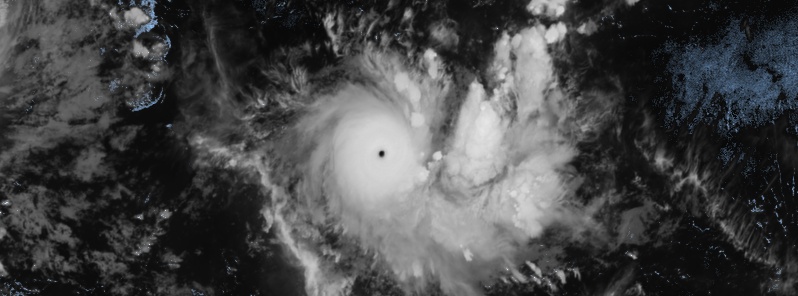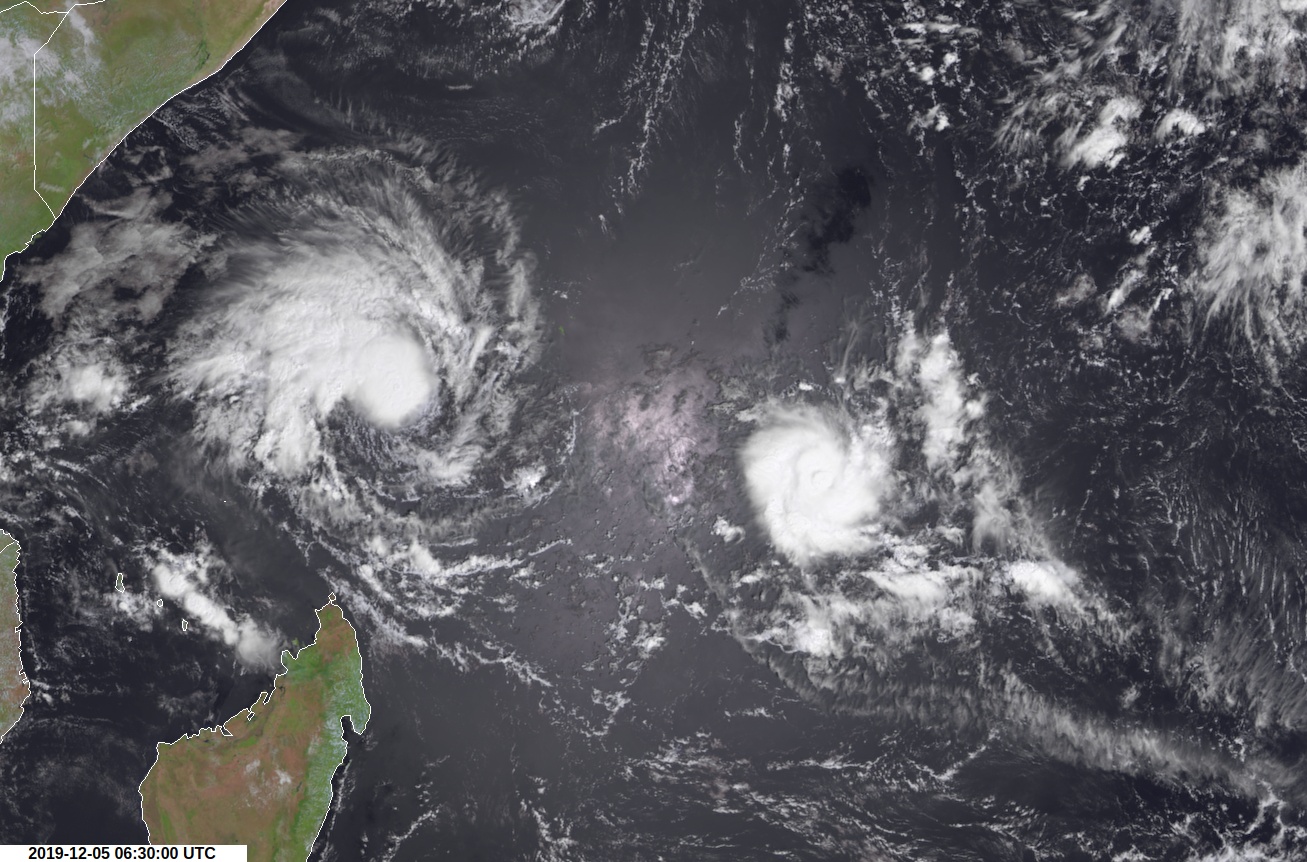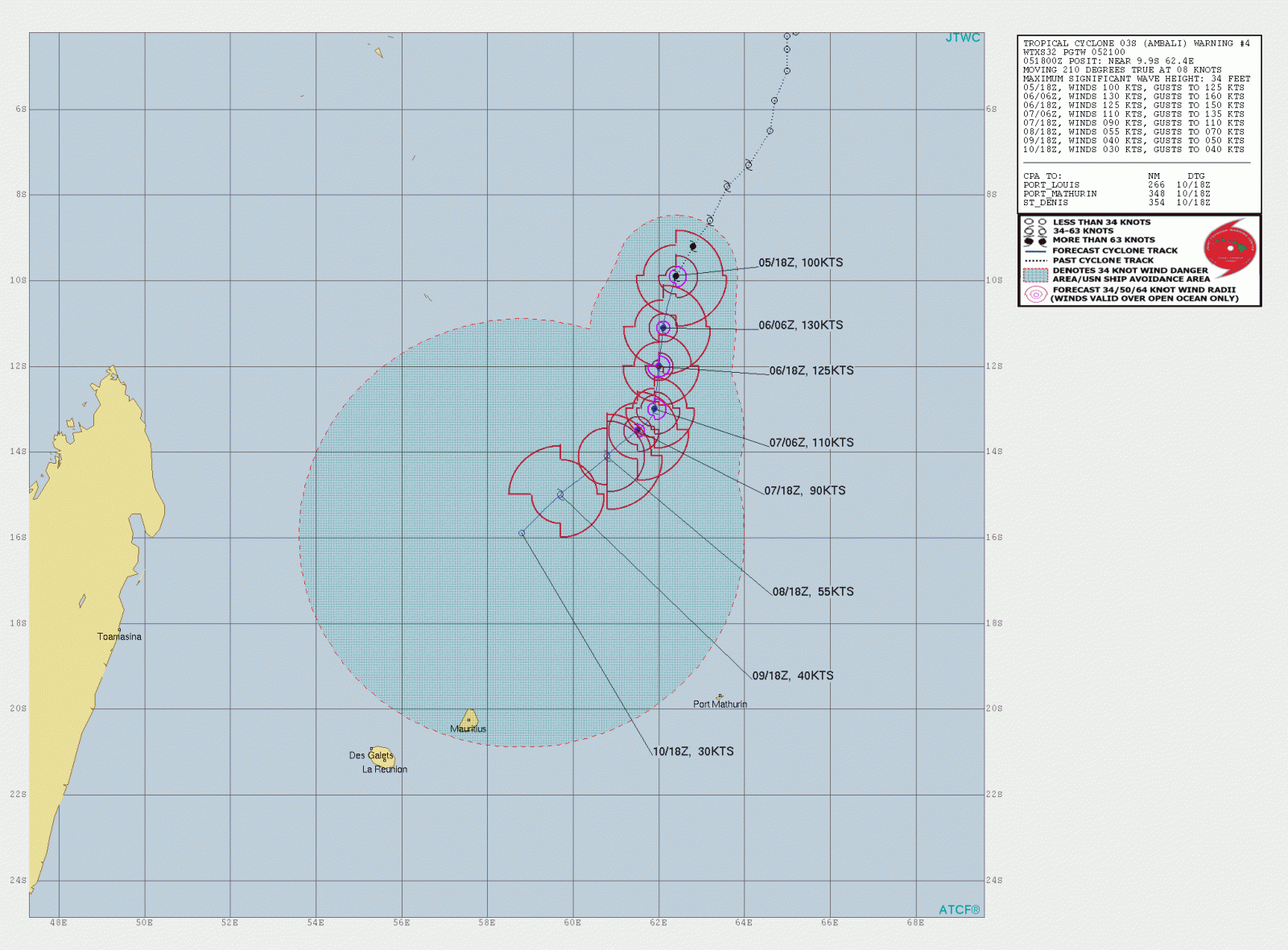Impressive rapid intensification of Tropical Cyclone “Ambali” in South Indian Ocean

An impressive rapid intensification of Tropical Cyclone "Ambali" is currently in progress in the South Indian Ocean.
This is the second named storm of the 2019/20 Southwest Indian Ocean cyclone season, forming just days after Belna, the first named storm of the season. This is also the first major hurricane strength cyclone of the 2019/20 Southern Hemisphere season to date.
Ambali was seen quickly organizing and attaining formative rainbands around a coalescing center of circulation on December 3. Quick organization continued on December 4 and into December 5 when the storm was finally named Ambali.
Due to its location in a highly favorable environment, a phase of rapid intensification ensued, accompanied by the formation of an eye.

Tropical Cyclone 02S (left) and Tropical Cyclone "Ambali" (right) at 06:30 UTC on December 5, 2019

Tropical Cyclone "Ambali" at 19:30 UTC on December 5, 2019. Credit: Meteosat-8

At 18:00 UTC, Meteo France upgraded Ambali to an intense tropical cyclone, following a 75 km/h (47 mph) increase in storm's winds in just three hours.
The intensification could continue this night. However, from tomorrow and beyond, due to an approaching upper levels trough, a westerly shear constraint appears in the mid-levels, then in the upper levels quickly after, associated with mid-levels dry air intrusion.
A rather rapid weakening is suggested by the available intensity guidance, RSMC La Reunion said.
The intensity forecast for such a small system remains challenging and associated with a greater than usual uncertainty, it added.
JTWC's current forecast calls for Ambali to peak at 240 km/h (150 mph) over the next 12 hours (by 06:00 UTC on December 6).
Featured image: Tropical Cyclone "Ambali" at 19:30 UTC on December 5, 2019. Credit: Meteosat-8

Commenting rules and guidelines
We value the thoughts and opinions of our readers and welcome healthy discussions on our website. In order to maintain a respectful and positive community, we ask that all commenters follow these rules.